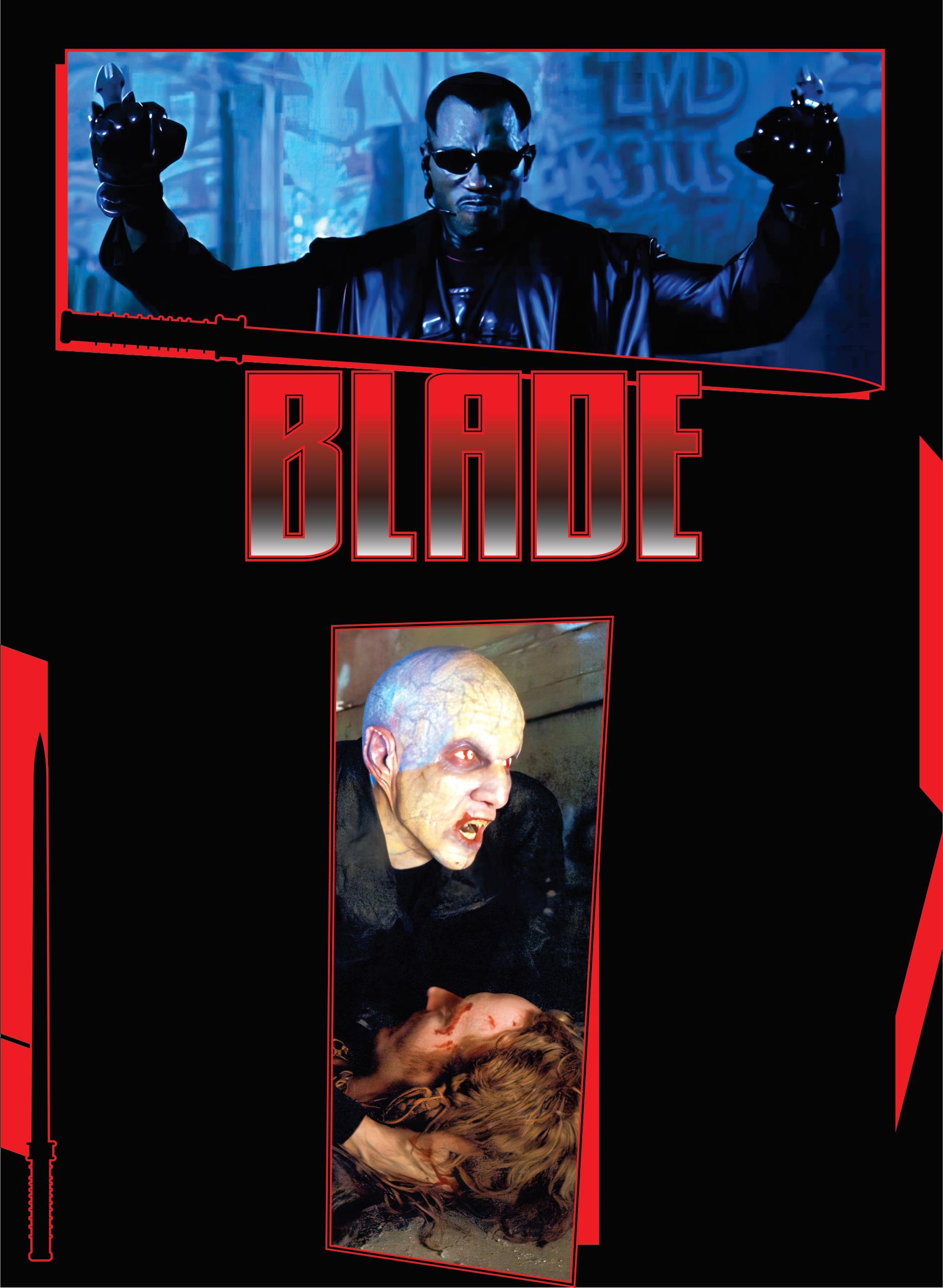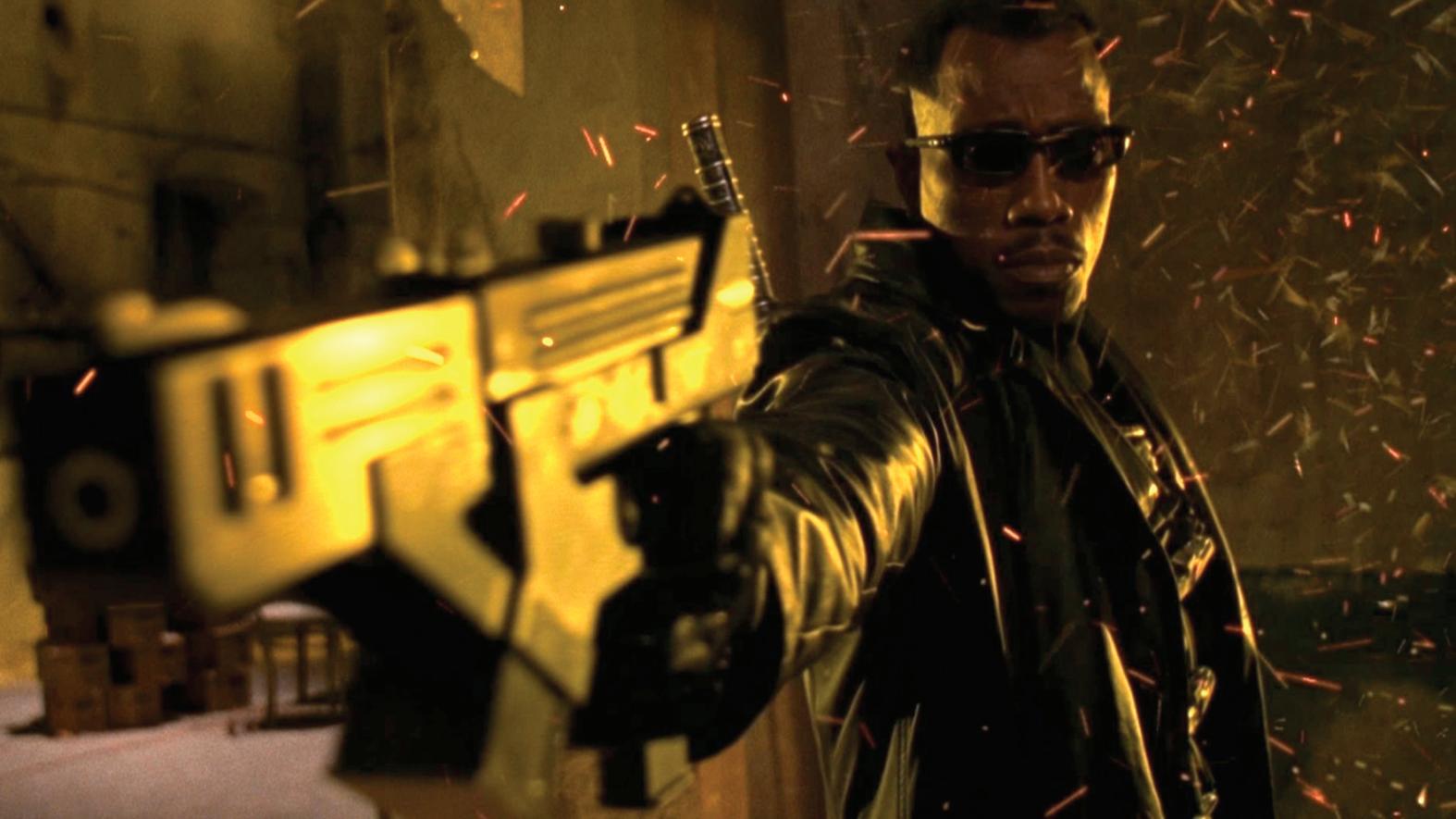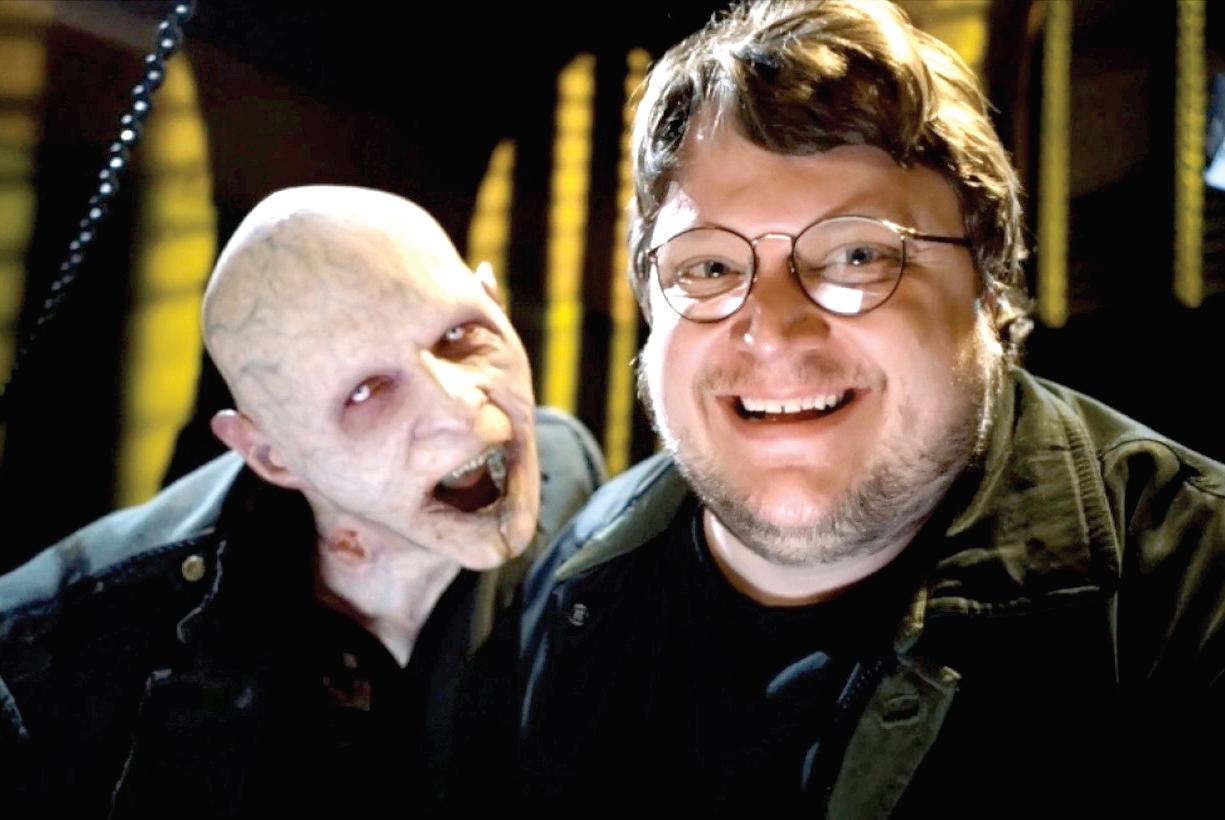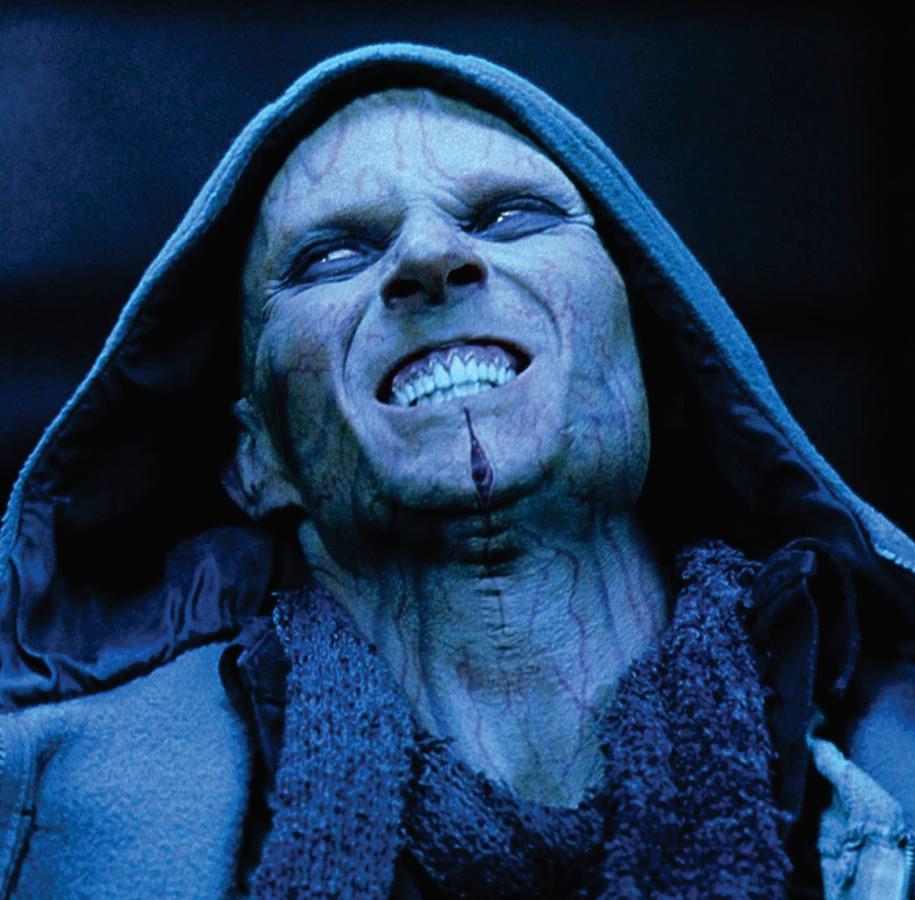
12 minute read
Delirium | Issue 32 | Flash of the Blade

Director Guillermo del Toro reflects on his majestic and monstrous 2002 action horror sequel "Blade II."
Director Stephen Norrington and writer David S. Goyer's muscular mutant of a Marvel movie, 1998's BLADE, was something of a landmark. Beating THE MATRIX's mind-bending martial-arts- infused action beats by almost a full year and delivering a fairly hard-R comic-book movie experience, the picture was instrumental in ushering forth a wave of more sophisticated adaptations of panel-bound pulp, while also deftly mixing brutal, bloody battles with vein-shredding vampire shenanigans. Taking the half-ghoul Marvel antihero (who first appeared in the publisher's early-1970s TOMB OF DRACULA series) and dropping him into the contemporary urban jungle, the movie also had things to say about class, capitalism and race, weaving these issues into a weirdly Shakespearean psychodrama an framing them with slick visuals, sexy fashion and punishing electronic music. Simply put, BLADE kicked everyone's ass, and became a surprise box-office success. And while most of its appeal lay in actor Wesley Snipes' stone-faced yet tongue-in- cheek portrayal of the furious vampire samurai, the film's roots in that beautiful period of post-Vietnam Marvel books, which blended superheroes and freakish Gothic horror, were what really made the movie cook. Naturally, distributor New Line Cinema wanted immediate follow-up, and despite Norrington not returning (for many reasons, though Goyer was a main- stay for all three BLADE pictures and even directed the third), they forged ahead. And as fate would have it, they locked in a real deal auteur to steer the ship. Mexican director Guillermo del Toro had chased his first big American film, 1999's MIMIC, with an artful Spanish ghost story, the critically acclaimed THE DEVIL'S BACKBONE. But despite his status as a singular horror visionary (which he cemented right from the get-go with his eerie debut CRONOS), del Toro needed a commercial hit. When the offer to helm BLADE II fell into his lap, he almost immediately said yes. And he set out to make the movie his own.
Celebrating its 20th anniversary this year, BLADE II is an astonishing work-a movie that builds beautifully on its predecessor, amplifies the action to near- delirious heights, tightens the screws of its narrative and magnifies the spastic horror. The result is the rare sequel that also functions as a personal piece of its director's own cinematic universe. It's popcorn art- shocker of the highest order. In it, Snipes' Blade returns, leaner and meaner and still obliterating every vampire in his path while searching for his mentor Abraham Whistler (professional outlaw Kris Kristofferson). Thought dead in the original, Whistler has in fact been kid- napped by the all-powerful ghoul nation and kept in a state of quasi-vampiric hell, starved into mania, fed only enough blood to keep him hooked.

After Blade liberates and cures the man who in essence is his father, he encounters a pack of vampire warriors, emissaries of the leader of the bloodsuckers, who offer him a truce and an alliance. Apparently, a rogue bloodsucker named Nomak (Luke Goss) has mutated and waged war on human—and vampire kind alike, turning his victims into a diseased pack of flap-mouthed monsters known as Reapers who feed on everything with a pulse. Accepting this assignment, Blade teams up with the "Blood Pack" to stop this new plague, while also learning that there may be more to the story than meets the fang. What makes BLADE II such a formidable picture is that it is most assuredly an organic sequel to the near-perfect original, while also being very much its own picture. And like its predecessor, it kicks ass in ways previously unseen while injecting welcome shots of macabre humor, tragedy and even a dash of romance. It's a work of sophisti- cated dark fantasy that continues to inspire, and still stands as one of its maker's most accomplished motion pictures. In honor of both its double decade of existence and in anticipation of Marvel's impending BLADE reboot, DELIRIUM tracked down the perpetually busy del Toro and asked him to reflect on a film that was hugely important to his career trajectory.

DELIRIUM: When you were growing up, did the Marvel horror books-things like TOMB OF DRACULA, MORBIUS, WEREWOLF BY NIGHT-play any part in shaping your ongoing interests in fantastic cinema?
GUILLERMO DEL TORO: The Gil Kane stuff did. He was one of my favorites. And obviously Mike Ploog. But Marvel? Well, save for Spider-Man, I was almost 100 percent a DC guy. I just thought they understood horror better, and in a more elegant way. DELIRIUM: BLADE II marks one of the only times you immersed yourself into an existing franchise or established cinematic universe. Do you feel that with your entry, you sort of started from scratch, or were you conscious of building on the world that Norrington had created?
DEL TORO: A bit of both. I asked New Line Cinema for a copy of the dailies of every single day of shooting that Norrington did. I wanted BLADE II to stand on its own, but I wanted to familiarize myself with the way he shot Wesley. I wanted Wesley to be a mythical-size superhero in the second one, but I also wanted to bring the horror elements more to the foreground.
DELIRIUM: How collaborative was Snipes? I suspect his very vocal admiration and respect for you and trust in you as a filmmaker made him relatively easy to work with.
DEL TORO: I love Wesley and think he is a natural star. He was very open, and I begged him to just bring his Bladeness to the foreground. I think we had exactly two-no, maybe three-bad days on the whole shoot, and one of them was the day he had to go to the hospital with tendon damage to his knee. The main thing Wesley valued was clarity and brevity. He wanted to have an efficient shoot. I was very comfortable with that, and the studio knew this was a valuable star and gave us leeway. That was absolutely great.
DELIRIUM: The film has a rich, vibrant look. Why did you choose Gabriel Beristain as DP? I've always liked his imagery in Russell Mulcahy's underrated TALE OF THE MUMMY; was this at all a factor in your choice, or was there another reason?
DEL TORO: I chose Gabriel because of CARAVAGGIO-because he had shot with Derek Jarman and had a very profound understanding of chiaroscuro and great d ideas. He came up with the idea of doing tungsten warm nights and cold days, reversing it all, and this look became very popular later.
DELIRIUM: Music was an essential part of the first BLADE picture. Mark Isham's music was moodier; Marco Beltrami's for the sequel is more '70s grit, with bursts of horns mixed in with the slinky electro- symphonic stuff. You've worked with Beltrami before and since. How closely do you collaborate with your composers during the process?
DEL TORO: I always riff well with Marco, and we always have an intense exploration of the sound. I knew I wanted a '70s updateon the score and heavy taiko drums in the orchestration, but Marco exceeded every- thing I dreamed of.
DELIRIUM: What about the trip/hip-hop songs that are also a vital part of the film's pulse? Were the songs presented to you before the edit? Did you have them in mind while shooting, or was the challenge to simply make them fit as you began assem- bling the picture?
DEL TORO: We had a great music supervisor named Happy Walters, who was suggested by [producer] Peter Frankfurt, and this guy had an ever-evolving catalog. I believe that I chose "I Against I" [by Massive Attack feat. Mos Def] in preproduction because I wanted to pace the scene, to get sort of that THE RIGHT STUFF moment; the MAGNIFICENT SEVEN moment, set to the music. That was the way I storyboarded that.
DELIRIUM: Can you speak on the Reaper design? Were their expanding mouths written in Goyer's script as they were eventually depicted?
DEL TORO: Not at all. Goyer had a John Carpenter's THE THING going on. The Reapers were shapeshifters. I had an old idea-a design I had envisioned for another vampire project, the way I thought vampires should look in an action-packed film. Sort of a return to making them scary and other- worldly. I had pitched to direct I AM LEGEND and they didn't hire me, so I just used the idea I had for that. I was inspired by photos of extreme reconstructive surgery where the lower mandible was missing. And the rest of the look, no hair and dark clothes and what have you, was just so we could use masses of extras and digital doubles more easily.
DELIRIUM: The makeup design for vampire overlord Damaskinos, played by Thomas Kretschmann, is interesting-like icy marble, almost translucent. I recall years ago listening to your DVD commentary on the deleted scenes and laughing uncontrol- lably at your own hysterics over his initial design, which you described as being "Michael fucking Bolton"! Was it your call during production to scrap that lame hair?
DEL TORO: Of course, and right after take one! I had designed the character without hair in my notebook, sort of an evolution of the alchemist's vampire look in the pro- logue of CRONOS. But we tried the wig...and it was so ridiculous! I liked the idea of vampires being almost stone as they aged. Moving slower, creaking...
DELIRIUM: Was this concept inspired by anything in particular?
DEL TORO: Yes, it started with two sources from my early childhood. One was "Schalken the Painter" by J. Sheridan Le Fanu. This story first gave me the idea: What if something that looked like a statue was alive? When I read Le Fanu's story, I screamed and called for my dad, who was in the room next door! This was composited with a legend in Mexico and Spain called "The Stone Guest," in which a statue comes to life.
DELIRIUM: Your previous films contained a modicum of choreographed action...but nothing like this! The battles feel different from the ones in Norrington's BLADE. Was it challenging to intelligently stage these sequences, and were you trying to channel a specific vibe from Hong Kong cinema or anime?
DEL TORO: I think I had done some good action on MIMIC, actually. I was very proud of the attack on the subway car. I studied STRAW DOGS by Sam Peckinpah, and I asked Jim Cameron-who is one of my very best pals-how I should best approach action. He just advised common sense: the camera should be in the best possible moment and place to convey the power dynamic. Alfonso Cuarón suggested running two cameras with short and long lenses. And I had seen a formation in Norrington's dailies where he had a semicircle with three cameras-two of them facing each other, in fact, but at different heights so they were off range of the lens. So on MIMIC, I had shot one scene with nine cameras already, and on BLADE II we shot a 13-camera setup in the House of Pain. I had them on dollies, cranes, handheld, Steadicam, etc., etc., and boarded carefully where each camera would be so as to use only a certain part of the footage. I edited in camera, basically.
DELIRIUM: The cast is stunning, including "The Blood Pack."
DEL TORO: I agree.
DELIRIUM: I presume Ron Perlman didn't need to audition, as you had already worked with him, but did the rest of the performers? Was it agony trying to curate your dream team?
DEL TORO: Yes, it was, but I knew who I wanted and why. I approached Donnie Yen specifically. He only choreographed the ramp fight and his battle with the Reapers; the rest was choreographed by the very talented Jeff Ward and myself, trying to give the fights a more comic-book-like feel. A grandiose, silly dimension. I wanted Demián Bichir for Chupa, or a Mexican actor called Gustavo Sanchez Parra, but for one reason or another, I couldn't get them. Still, I was very pleased with the cast.
DELIRIUM: BLADE II was a huge hit. I suspect New Line and Snipes wanted you back for the third picture. Was it offered, and if so, why did you decline?
DEL TORO: They did want me, but I wanted something big. I pitched sort of a ROAD WARRIOR type of sequel, an aftermath of a vampire victory where Blade stood alone in a desert of bloodsuckers. It was far too big, too crazy for them.
DELIRIUM: Would you ever direct a sequel to a film that is not yours again?
DEL TORO: Not really, no. This was my one exception, because the Weinsteins maligned me during and after MIMIC and I wanted to repair the perception so I could do HELLBOY. My agent said, "If you ever wanna do HELLBOY, THE DEVIL'S BACKBONE won't get it for you. You need something to make a big splash." BLADE II was indeed big, but like HELLBOY, it was truly enormous on the home market: rentals, VHS sales, DVD sell-through. That's why those movies birthed sequels. In some cases, video doubled the box-office sales.
DELIRIUM: My final question: What is the greatest thing you learned from working with iconic outlaw Kris Kristofferson?
DEL TORO: To never bullshit with him; to never try to handle him. To just be up-front, truthful and sure of yourself and if you are, you may just survive the day!


